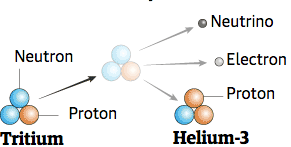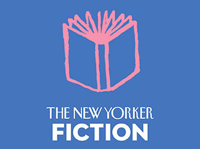The New Yorker has posted a full article by John Updike titled “The Future of Faith; Confessions of a churchgoer,” which was originally published in the Nov. 29, 1999 issue.
 More than a reflection, the essay illustrates the research that Updike did for his articles. As a think piece, it’s superb, but it’s also excellent reporting. In his opening paragraph, Updike situates his remarks in a broader cultural context and notes the irony of a 1999 study by a sociologist at the University of Arizona: “belief in the afterlife is going up, even as church attendance drops,” and as part of a “do-it-yourself trend, the sales of religious books have risen spectacularly, by fifty percent” from 1990-2000.
More than a reflection, the essay illustrates the research that Updike did for his articles. As a think piece, it’s superb, but it’s also excellent reporting. In his opening paragraph, Updike situates his remarks in a broader cultural context and notes the irony of a 1999 study by a sociologist at the University of Arizona: “belief in the afterlife is going up, even as church attendance drops,” and as part of a “do-it-yourself trend, the sales of religious books have risen spectacularly, by fifty percent” from 1990-2000.
Updike goes through a catalogue of examples and concludes, “The welter of religious phenomena is not necessarily comforting to the professor of a specific faith; the very multiplicity and variety suggest that none of it is true, other than manifesting an undoubted human tendency. A Protestant Christian on the eve of the third millennium must struggle with the sensation that his sect is, like the universe itself in the latest cosmological news, winding down, growing thinner and thinner.”
Updike talks about his religious experiences on a trip to Italy and the journalist in him cites additional examples before concluding, “Faith is not so much a binary pole as a quantum state, which tends to indeterminacy when closely examined. In the several New England suburbs where I have lived my adult life, there was no easy telling, from other signs, who was and who was not a churchgoer,” Updike remarks, adding, “I have been struck by the number of unaccompanied men who show up in church, sitting, standing, and kneeling their way through this errand of habit or ancestral homage. A differentiating factor of intelligence is not conspicuous. At the end of the millennium, and of a century that has the Holocaust at its center, the reasons for doubt in God’s existence are so easily come by—His invisibility, His apparent indifference to the torrents of pain and cruelty that history books and the news media report, the persuasive explanations that science offers for almost all phenomena once thought mysterious—that church attendance must be taken, at least in the American Northeast, as a willful decision to evade what G.K. Chesterton called “atheist respectability.”
Updike the journalist cites the health benefits of churchgoing: “a 1999 Duke University study shows that regular churchgoers were twenty-eight percent less likely to die in a given seven-year period that non-churchgoers. But a church will not last long as merely a health club; other health clubs exist, and other, less demanding means for generating togetherness. The pith and poignance of a church lies in its being a company of believers.”
Updike muses, “Perhaps the religion of the future lies all about us, in the proliferating escapism and induced hysteria of ‘entertainment,’ with all the intimidating, mind-blowing enlargement that electronic media have made possible. We are surrounded by entertainment more completely than medieval man was by the church and its propaganda. Feeling despondent and lonely? Turn on the television set,” Updike writes.
But, he cautions, “The future is not just an extension of the past; like a particle being measured, it eludes prediction. . . . Something might happen in faith’s future. Science might come up with a surprise—a loophole among the quarks or a reinstatement of the cosmological constant. Or the dynamic of human nature, as Earth’s population rolls past six billion, might produce a qualitative change in the frame of faith, or the world’s tired, grotesque, irreplaceable faiths. What occurs won’t be easily intelligible—the Gospels took most of a century to get written—but the hearing, the insistence that there be, to again quote William James, ‘something more,’ will persist. Our concepts of art and virtue, purpose and justification are so tied up with the supernatural that it is hard to foresee doing altogether without it.”
Read the full article.
 “In fact, there are more neutrinos in the universe than any other type of particle of matter, though hardly anything can stop these cosmological lightweights in their paths. And this inability to interact with other matter has made them a source of considerable frustration for scientists who believe neutrinos could bring new understandings to major cosmological problems, including the nature of dark matter and the fate of our expanding universe. Unfortunately, the unbearable lightness of their being makes them very difficult to study.”
“In fact, there are more neutrinos in the universe than any other type of particle of matter, though hardly anything can stop these cosmological lightweights in their paths. And this inability to interact with other matter has made them a source of considerable frustration for scientists who believe neutrinos could bring new understandings to major cosmological problems, including the nature of dark matter and the fate of our expanding universe. Unfortunately, the unbearable lightness of their being makes them very difficult to study.”





